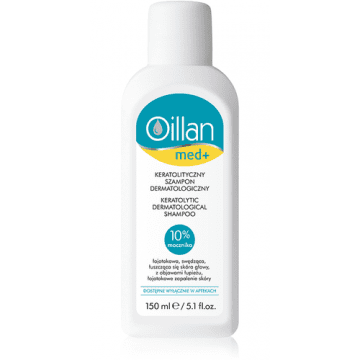Contents
Keratolytic creams and shampoos: when and why to use them?
You have probably already come across, on the shelves of your drugstore, creams, serums or even shampoos with enigmatic keratolytic properties. What is a keratolytic agent? What are these products used for? Are they effective? Dr Marie-Estelle Roux, dermatologist, answers our questions.
What is a keratolytic agent?
A keratolytic agent is an agent that removes excess keratin and dead cells from the stratum corneum of the skin or scalp. “These excess keratin are associated with dead skin or scales” explains the dermatologist. Keratolytic agents work by softening the stratum corneum and promoting the desquamation of epidermal cells.
They are used in local application, in conditions where the skin produces an excess of dead cells.
What are the main keratolytic agents?
The most commonly used keratolytic agents are:
- Fruit acids (known as AHAs): citric acid, glycolic acid, lactic acid, etc. They are the benchmark ingredients in chemical peels;
- salicylic acid: it is found naturally in certain plants, such as willow – from which it also takes its name;
- urea: this natural molecule manufactured by the body and industrially from ammonia, allows the elimination of the superficial part of the corneal layer of the epidermis.
What are the indications in dermatology?
“In dermatology, keratolytic creams are used in all cases of hyperkeratosis” explains the dermatologist:
- plantar keratoderma: it is the formation of horn on the heels;
- keratosis pilaris: it is a benign but very common condition (it affects one in 4 people) which is manifested by rough and grainy skin on the back of the arms, thighs and sometimes on the face with a look of goosebumps ;
- thick skin on the elbows or knees;
- certain psoriasis;
- seborrheic dermatitis: this is a chronic disease manifested by scales and redness, usually on the face or scalp;
- warts, hearts;
- solar keratoses: these are the small red scaly patches caused by too much exposure to the sun. They are most often localized on the face but also on the neckline and the back of the hands.
What are the indications in cosmetics?
In cosmetics, keratolytic creams are less heavily dosed, and can be used for their small peeling effect: they smooth, hydrate and soothe dry and rough skin and restore the skin barrier.
They are also indicated for the skin:
- dry to very dry;
- psoriatic,
- acne-prone;
- prone to comedones;
- whose pores are dilated;
- prone to ingrown hairs.
And what indications for shampoos?
Keratolytic shampoos are offered for people who suffer from dry dandruff, or thick or even crust on the scalp. Some low-dose shampoos suitable for infants can also be offered to relieve cradle cap in young children.
“For more efficiency, keratolytic shampoos can be applied dry, to the scalp and be applied for about fifteen minutes, before being rinsed in the shower” advises the dermatologist.
Contraindications and precautions for use
Infants, young children and pregnant women should not use cosmetics based on urea or salicylic acid. Any exposure to the sun is contraindicated for the duration of the treatment.
These products, when they are in high doses, should only be used very locally.
Adverse effects
Adverse effects are burns, irritation and systemic toxicity when used on too large areas. They mainly concern highly dosed products, available only on prescription.










